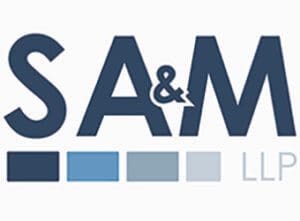
___________________________________
On September 16, 2011, President Barack Obama signed into law the most sweeping changes to U.S. patent laws in nearly 50 years. These changes included:
• Giving patent ownership to inventors who are the first to file a patent application instead of those who were the first to invent the same invention (beginning March 16, 2013).
• Recognizing a defense to patent infringement based upon having manufactured or sold the patented invention in the U.S. at least one year prior to the patent application filing date.
• Implementing new procedures within the U.S. Patent and Trademark Office (USPTO) for third parties to challenge pending patent applications and granted patents.
• Allowing patent holders to satisfy patent marking requirements by marking patented products with the Internet address where information about their patents can be found.
• Limiting the ability of patent owners to bring industry-wide infringement actions against multiple unrelated companies in a single lawsuit.
• Requiring the USPTO to implement a process for reviewing business method patents when requested by parties charged with infringing these patents.
• Enabling assignees of inventions to file patent applications if the inventor refuses to cooperate.
A copy of the America Invents Act can be found at http://www.gpo.gov/fdsys/pkg/BILLS-112hr1249enr/pdf/BILLS-112hr1249enr.pdf.
Why are these new laws important? Companies will need to adopt procedures to avoid losing patents on their inventions to competitors. Until now, U.S. law awarded patents to first inventors of novel, useful and non-obvious inventions. This will change in 18 months – the inventor who is the first to file a patent application will be entitled to the patent for an invention that somebody else invented earlier, leading to a race to the patent office. Those who are not first will need to employ new USPTO proceedings to try to win patents for their inventions or invalidate those awarded to competitors.
What should businesses do? Any business that creates inventions will need to update its intellectual property protection procedures to reflect these recent changes in U.S. patent law. Companies should consult experienced intellectual property counsel to:
• Devise and implement an internal IP strategy and procedures for identifying patentable inventions and minimizing infringement risk, including liability risk of willful infringement.
• Update employee, independent contractor and joint development agreements to reflect the “first-to-file” patent ownership rule.
• Understand the USPTO’s new procedures for challenging competitors’ patent applications and issued patents.
How Stubbs Alderton & Markiles, LLP can help. We are a business law firm with particular expertise in intellectual property law. Our attorneys have extensive experience in developing intellectual property protection strategies to enable businesses to maximize the value of their inventions. We inform our clients how to best update their IP strategies, patent filing procedures and invention assignment agreements and how to use today’s U.S. patent laws to their competitive advantage.
Kevin D. DeBré leads the firm’s Intellectual Property and Technology Transactions Practice Group advising entrepreneurs and companies on how to use technology and intellectual property in building successful businesses. Kevin is a registered patent attorney and has over 20 years of experience in structuring and negotiating intellectual property-driven deals.
For more information, please contact Kevin at (818) 444.4521 or

A real estate investment trust (a “REIT”) is a corporation or an association otherwise taxable as a domestic corporation intended to own interests in real property or in debt secured by real property. The principal advantage of a REIT for holding real property is the deduction for dividends paid that enables a REIT to avoid corporate level taxation.
To qualify as a REIT, a corporation must satisfy a number of, shareholder, income and asset tests, including income tests requiring that at least 75 percent of its gross income must be derived from real estate sources, principally (i) rents from real property, (ii) interest on debt obligations secured by mortgages or deeds of trust on real property, (iii) gains from the sale of real property; and that at least 95 percent of the corporation’s gross income must be derived from interest or dividends as well as real estate income qualifying for the 75 percent of income test.
As a statutorily favored entity, REITs are often the objects of generous revenue rulings and private letter rulings. For example, in late 2012, the Internal Revenue Service released several favorable private letter rulings on the issue of REITs holding an interest in a passive foreign investment company (a “PFIC”) or a controlled foreign corporation (a “CFC”), ruling that the Subpart F Income of a CFC (CFCs are foreign corporations at least 50% of whose stock, by vote and value, is owned by US shareholders and are subject to federal income tax on their undistributed “Subpart F Income”) and the foreign personal holding company income of a PFIC in each case recognized by a REIT owning interests in a CFC or a PFIC may be treated as qualifying for the 95 percent of income test under Section 856(c)(2).[1] A PFIC is a foreign corporation, at least 75% of whose income is “passive income” and at least 50% of whose assets are held for the production of passive income. For that purpose, “passive income” is generally dividends, interest, royalties, rents, annuities, and gains from the sale of property. US shareholders are required to include in income their share of certain of the PFIC’s excess distributions.
In addition to the income tests described above, to qualify as a REIT, at least 75% of the value of the corporation’s assets must consist of real estate assets, cash and cash items and government securities as of the last day of each calendar quarter. In a recent private letter ruling, the Service held that the value of deferred organizational expenses carried as an asset on a REIT’s balance sheet would be considered zero for purposes of the quarterly asset test.[2] By so ruling, the IRS enabled the REIT not to have to consider the deferred organizational expenses in comparison to the value of its real estate, government securities and cash and cash items.
The Service has long treated various fixtures as real estate assets for REIT qualification purposes, going back to 1973 when it held that a building’s “total energy system,” powered by turbines, would qualify as a real estate asset.[3] More recently, relying in part on that 1973 revenue ruling, the Service agreed to treat an offshore oil drilling platform (exclusive of machinery) as real property.[4]
The Service has also been issuing favorable “infrastructure” rulings for REITs engaged in owning wireless cell towers. In those rulings, the cell towers are held to qualify as real property and the income attributable to tenants’ payments for power generated by the REIT’s on-site generators is treated as includible in rents from real property.[5]
The Service also provided a favorable published revenue ruling to the effect that investments in money market funds qualify as “cash items” for purposes of the 75 percent of assets quarterly REIT qualification test.[6] In reaching its favorable conclusion, the Service looked to the Investment Company Act of 1940.[7] While the Investment Company Act itself does not define the term “cash item,” the Securities and Exchange Commission issued a no-action letter, upon which the Service relied in issuing its private letter ruling, to the effect that an investment in a money market fund is a cash item under Section 3(a)(1)(C) of the Investment Company Act.[8]
In addition to the income and asset tests, the REITs dividend distributions must be pro rata within the meaning of Section 562 in order to be deductible. In Private Letter Ruling 201244012 (Nov. 2, 2012), the Internal Revenue Service issued a favorable ruling on the issue of whether dividends distributed among three different classes of stock of a REIT would be deductible. In order for a REIT to be able to deduct dividend distributions, a REIT’s distributions must be made pro rata among the shareholders in accordance with the rights and preferences set forth in the REIT’s corporate charter.[9] REIT “distributions must not prefer any shares of stock of a class over other shares of stock of that same class. The distribution must not prefer one class of stock over another class except to the extent that one class is entitled (without reference to waivers of their rights by stockholders) to that preference.”
In that letter ruling, the subject REIT adopted some of the liquidity features of a mutual fund. The REIT had issued shares of its common stock (the “Class E Shares”) to accredited investors in a private placement on its formation. Thereafter, the REIT filed a registration statement to register the sale of two new classes of its stock, Class A and Class M. The Class A Shares and Class M Shares were to be offered for sale on a daily basis at the net asset value (“NAV”) for shares of such class plus, with respect to Class A Shares, applicable selling commissions and would be repurchased by the REIT at the NAV for such share class. Subject to certain limitations, the REIT intended the share repurchase plan to allow holders of Class A Shares and Class M Shares to request that the REIT repurchase their shares in an amount up to an agreed percentage of the REIT’s NAV after such shares have been outstanding for at least one year. The Class A Shares would be subject to a selling commission (“Selling Commission”) to the extent not otherwise waived or reduced and paid directly by the shareholder, in addition to the NAV for such shares. No Selling Commission would be charged with respect to the Class M Shares. Despite the differences among the three classes of stock, the Service held that dividend distributions on all of the classes of stock would be deductible as pro rata according to the terms and preferences stated in that REIT’s charter documents.[10]
The Service continues its long-standing practice of issuing favorable rulings, private as well as published, on REIT qualification issues, including assets constituting real property, and the types of income qualifying for the 75% of income and 95% of income REIT qualification tests. Because of the Service’s willingness to accept reasonable pro-REIT analyses in issuing private letter rulings, practitioners may feel more comfortable relying on the analysis set forth in private letter rulings when opining on REIT issues, especially in the context of a REIT that is not publicly issued and traded.

________________________________________________
[1] Priv. Ltr. Rul. 201246013 (Nov. 16, 2012).
[4] Priv. Ltr. Rul. 201250003 (Dec. 14, 2012).
[5] Priv. Ltr. Rul. 201301007 (Jan. 4, 2013); see also Priv. Ltr. Rul. 201129007 (Jul. 22, 2011).
[6] Rev. Rul. 2012-17, 2012-25 I.R.B. 1018 (June 15, 2012).
[7] 15 U.S.C. §§80a-1, et. seq. I.R.C. Section 856(c)(5)(F) so authorizes (“All other terms shall have the same meaning as when used in the Investment Company Act of 1940...”).
[8] Op. Off. of Chief Counsel, No. 200010241124 (Oct. 23, 2000), available at http://www.sec.gov/divisions/investment/noaction/2000/willkiefarrgallagher102300.pdf.
[9] Treas. Reg. §1.562-1.
[10] See Treas. Reg. §1.562-2(a).
________________________________________
For more information regarding REIT or about the Tax Practice at Stubbs Alderton & Markiles, LLP, please contact Michael Shaff at or (818)444-4522.
The Bush tax cuts. The Bush tax cuts primarily enacted by the 2001 and 2003 Tax Acts under President George W. Bush were extended through 2012 as part of the Tax Act of 2010. The Bush tax cuts currently set to expire at the end of 2012 include:
The Bush tax cuts also gradually reduced the estate tax over 2002 to 2009, leading to its repeal in 2010. The 2010 Tax Act reinstated the estate tax for after 2010 and enacted a $5 million exemption (adjusted for inflation in 2012), a top estate tax rate of 35%, and a step-up in basis through 2012. The 2010 Tax Act also introduced the new “portability” feature allowing a deceased spouse's unused exemption to be shifted to the surviving spouse.
Post-2012 scheduled changes. If the above provisions are allowed to expire, for tax years beginning after Dec. 31, 2012:
Additionally, after 2012, the estate tax exemption is scheduled to fall to $1 million and the top rate will revert to 55%.
AMT. For 2012, absent another patch, the AMT exemption amounts are $45,000 for married individuals and $33,750 for unmarried individuals, and most nonrefundable credits won't be allowed against the AMT. A Congressional Research Service report estimates that, unless Congress acts, 30 million plus taxpayers, or roughly one-fifth of all taxpayers, could be hit by the AMT in 2012.
Payroll tax cut. The Federal Insurance Contributions Act (FICA) imposes two taxes on employers, employees, and self-employed workers—one for Old Age, Survivors and Disability Insurance (OASDI; commonly known as the Social Security tax), and the other for Hospital Insurance (HI; commonly known as the Medicare tax).
To help stimulate the economy by increasing workers' take-home pay, the 2010 Tax Relief Act reduced by two percentage points the employee OASDI tax rate under the FICA (from 6.2% to 4.2%) and the OASDI tax rate under the SECA tax for the self-employed (from 12.4% to 10.4%) on the first $106,800 of wages. The temporary reduction was originally scheduled to expire at the end of 2011.
Current law. The 2-point reduction was ultimately extended through 2012. For the first $110,100 of remuneration received during 2012, the 4.2% and 10.4% rates apply. Absent Congressional action, the OASDI rates will revert to normal levels after 2012.
Obamacare investment tax. A Medicare contribution tax will be imposed after 2012 on the net investment income—generally interest, dividends, annuities, royalties, rents, and capital gains—of individuals meeting an income threshold. The tax will be 3.8% of the lesser of (a) net investment income or (b) the excess of modified adjusted gross income over $250,000 for joint return filers and surviving spouses, $125,000 for separate return filers, and $200,000 for other taxpayers. This special tax on investment income will only apply to taxpayers with adjusted gross income in excess of $250,000, taxpayers who also face the reinstated 39.6% top federal income tax bracket.
California Changes. California voters approved Proposition 30 and Proposition 39. Proposition 30 increases personal income tax rates for high-income earners by creating three new tax brackets. These brackets are effective for taxable years beginning on or after January 1, 2012, and before January 1, 2019.
Taxpayers, except heads of households and married filing jointly taxpayers, are subject to personal income tax:
The above thresholds for married filing jointly taxpayers are double those for single taxpayers.
Proposition 39 requires the use of single-factor apportionment for most businesses for taxable years beginning on or after January 1, 2013. An apportioning trade or business must apportion business income to California by multiplying the business income by the sales factor, unless the taxpayer is primarily engaged in agriculture, mining or drilling or banking businesses. The property and payroll factors will now only apply to those industries. The new rule is intended to have the effect of taxing a higher percentage of the net income of out-of-state businesses.
A lot can still happen on the federal side. Congress may reach an agreement to extend some of the Bush tax cuts before the end of the year or even in the new year as part of an overall budget reconciliation. In addition, an AMT “patch” is somewhat more likely to occur.

Should you have further questions or concerns about the post-2012 tax cuts or our Tax & Estate Planning Practice, please contact Michael Shaff at or (818) 444-4522.
What is a convertible promissory note?
A convertible promissory note is a debt instrument that is convertible into equity at a future date either automatically upon the occurrence of certain events or at the choice of the investor. Even though it is a debt instrument, investors who purchase convertible promissory notes issued by a start-up company are expecting the notes to convert into equity at a future date, since equity (unlike straight debt) allows investors to participate in the upside of the company. A simple return of principal and interest is not attractive to an early stage investor who is taking tremendous risk in funding a start-up. To compensate investors for the risk they are taking, the notes sold are often convertible at a discount to the price of the next preferred equity round and will also contain a “cap” – or a maximum conversion price - on the price at which the note will later convert.
What is preferred stock?
Preferred stock is an equity ownership interest in a company with certain features that are designed to protect an investor’s investment. For example, investors in preferred stock typically receive cash distributions before holders of common stock and also receive certain rights relating to the control of the company, such as board representation and the right to veto certain company activities.
Why do start-up companies and investors sometimes prefer the sale of convertible promissory notes over equity to finance a startup?
Convertible promissory notes are sometimes used to finance start-up companies when the prospective investors lack the sophistication to properly price an equity round, when the size of the financing does not warrant the costs of a traditional preferred stock financing or when the company and the investors want to avoid pricing an equity round. In addition, convertible note financings are often used because they are perceived to be quicker and cheaper to structure and document than preferred stock financings.
What are some of the risks for investors financing a start-up through a convertible promissory note?
Even though convertible notes often contain price discounts to the next equity round and conversion caps, purchasers of convertible notes are often not sufficiently compensated for the risk they are taking in financing a start-up. Caps are often set at a premium to the company’s value at the time the notes are issued and discounts may not be adequate, especially as the time between the issuance of the notes and the priced equity round increases. Moreover, initial investors are subject to the risk that later investors, who often have greater bargaining power (especially if a company is in dire need of financing), will attempt to renegotiate the terms of the promissory notes to their detriment.
Convertible notes also may not adequately compensate early stage investors to the extent the investors provide resources to the company, such as key customer or supplier introductions, or otherwise add credibility or other value to the company. If the value of the company rises substantially as a result of the investor’s efforts, the investor is ultimately increasing the price they will pay for their own equity in the company, which is clearly a perverse outcome.
What are some of the risks a company that issues convertible promissory notes faces?
Convertible notes work well for start-up companies when the value of the company increases between the time of the debt financing and a preferred stock financing. However, if the value of the company falls, investors who purchased convertible notes may end up owning more equity in the company then the company anticipated at the time of the debt financing. This occurs because the price discount feature often included in the notes enables the investors to purchase equity at a price below what they would have paid at the time they purchased the convertible notes. Moreover, because the purchased equity often contains a liquidation preference, in addition to obtaining a larger equity position in the company at the expense of the founders, investors will also likely obtain an increased preference over the founders to the cash of the company in the event of a sale, dissolution or winding up of the company. Another downside of convertible notes is that, in the event a convertible note is not converted into equity prior to its maturity, investors could demand that the note is repaid with principal and interest, or potentially force the company into bankruptcy if the loans cannot be restructured.
Conclusions
The issuance of convertible promissory notes can be an effective means for start-up companies to raise capital. However, before raising capital through the issuance of promissory notes, investors and companies need to carefully evaluate the risks associated with the issuance of promissory notes in comparison to other financing alternatives.
_______________________________________________

_____________________________________________
For more information regarding promissory notes, raising capital, or similar inquiries, please contact Jonathan Friedman at (818) 444-4514 or .
Stubbs Alderton is featured in the November 12th LA Business Journal story: "Catching the Wave - Service providers flock to Westside to shore up Silicon Beach clients." The article specifically features SAM PartnersLouis Wharton, Greg Akselrud and Kevin DeBré, as they discuss our launch of a Santa Monica office and commitment to the LA startup scene. See more here.

Stubbs Alderton & Markiles also announced the launch of its Preccelerator program for startups looking to access accelerators and venture capital. The Preccelerator will offer on a rolling basis 5-6 entrepreneur groups or start-ups free co-working space as well as the ability to leverage the firm’s resources, including access to legal services, business plan reviews and introductions to sources of capital and service providers offering targeted expertise.
“Since founding the firm more than 10 years ago, we have been committed to the growing venture capital and start-up communities in Southern California, and in Silicon Beach specifically,” said Scott Alderton, a founder and managing partner of Stubbs Alderton & Markiles. “As this area continues to foster the growth of startups, accelerators and venture capital firms, we wanted to demonstrate our commitment to Silicon Beach. We believe there is no better way to do that than being there full-time.”
Founded in 2002 by Joe Stubbs, Scott Alderton, Murray Markiles, John McIlvery and Greg Akselrud, Stubbs Alderton has grown to 17 lawyers and possesses a broad practice representing emerging growth and technology companies, middle market public companies, large technology, consumer electronics and internet companies, investors, private equity funds, investment bankers and underwriters, and entertainment and video game companies in all aspects of business formation, corporate transactions, seed and venture capital finance, securities, mergers & acquisitions and internet, mobile and other intellectual property transactions. Partners Joe Stubbs, Scott Alderton, Kevin DeBré, Greg Akselrud and Louis Wharton will have offices in Santa Monica.
The firm understands the business challenges faced by companies and provides contextual representation throughout the growth and life cycle of its clients.
“Our Preccelerator program is not intended to compete with the existing Silicon Beach accelerators that are doing so much for our community, or provide initial funding to startups, “ added Alderton. “Rather, we will provide a platform for them to get interim office space and sophisticated legal services, and to ultimately grow their ideas from business concept to funded startup. We hope that the platform will allow entrepreneurs a streamlined transition to an accelerator program, financing or to otherwise launch their businesses.”
For more information, or to apply to the Preccelerator program, visit our Preccelerator site.
About Stubbs Alderton & Markiles
Stubbs Alderton & Markiles, LLP is a business law firm with robust corporate, public securities, mergers and acquisitions and intellectual property practice groups focusing on the representation of venture backed emerging growth companies, middle market public companies, large technology and internet companies, entertainment, video games and digital media companies, investors, venture capital funds, investment bankers and underwriters. The firm’s clients represent the full spectrum of Southern California business with a concentration in the technology, entertainment, video games, apparel, consumer electronics and medical device sectors. The firm’s mission is to provide technically excellent legal services in a consistent, highly-responsive and service-oriented manner with an entrepreneurial and practical business perspective. These principles are the hallmarks of the firm.
V. Joseph Stubbs is a founder and partner of the firm and co-chair of the Venture Capital and Emerging Growth Practice Group. Joe practices in the areas of corporate and securities law, emphasizing the corporate representation of both publicly-held and privately-held growth and middle-market companies, venture capital firms, angel investment groups and investment banks. He acts as outside general counsel to numerous emerging growth and technology companies, advising on a wide range of legal and strategic issues at each stage of a company’s evolutionary path.
Scott Alderton is a founder and partner of the firm, and co-chair of the Venture Capital and Emerging Growth Practice Group. Scott is a corporate and technology lawyer who focuses exclusively on advising middle-market, technology, emerging growth, and development stage companies in the areas of corporate and securities, mergers and acquisitions, high technology, business, licensing, intellectual property, the Internet and multimedia.
Kevin DeBré is chair of the firm’s Intellectual Property Group and advises entrepreneurs and companies engaged in building businesses based upon technology or intellectual property assets and he has particular expertise in structuring and negotiating intellectual property-driven deals. A business lawyer, a registered patent lawyer and a former engineer, Kevin handles a wide range of transactions, develops IP protection strategies and advises management teams on compliance with privacy and data security laws and regulations.
Greg Akselrud is a founder and partner of the firm and chair of the firm’s Internet, New Media and Entertainment practice group. Greg acts as outside general counsel to entertainment, Internet, apparel, digital media and other technology companies in a variety of corporate, financing and transactional matters; serves as strategic counsel to clients, representing their interests in investment transactions, joint ventures and mergers and acquisitions; and serves as primary counsel to publicly-held companies, providing advice on all aspects of their business activities, securities filings and public and private offerings.
Louis A. Wharton is a partner of the firm. Louis’ practice focuses on advising startup, emerging growth and middle market companies across a spectrum of industries in securities compliance, corporate finance, mergers and acquisitions and general corporate matters. He counsels clients in the technology, internet/e-commerce, pharmaceutical, apparel and entertainment industries, among others.
Contact:
Heidi Hubbeling
Director of Marketing
(818) 444-4526
Stubbs Alderton & Markiles, LLP – Office Locations
Santa Monica
1453 3rd Street Promenade
Suite 310
Santa Monica, CA 90401
Sherman Oaks
15260 Ventura Blvd.
20th Floor
Sherman Oaks, CA 91403
Prudent investors often request some protection against the risks associated with a decrease in the value of companies in which they invest (referred to herein as the issuer). Investors typically obtain this protection by including in the issuer’s charter provisions facilitating a reduction, in certain circumstances, of the price at which they will convert the preferred stock they purchase into shares of the issuer’s common stock. Anti-dilution protection ensures that in the event of a down round (i.e. a subsequent financing in which the issuer sells shares at a price below the price the investor paid) the investor will suffer a more limited amount of dilution (i.e. a smaller reduction in the percentage of the issuer’s stock that the investor owns).
The typical provisions relate to weighted-average anti-dilution protection. Broad-based weighted-average anti-dilution protection takes into account all securities that are convertible into, exercisable for or exchangeable for shares of the issuer’s common stock. The typical formula adjusts the conversion price for the issuer’s outstanding preferred stock (i.e. the shares purchased by the investor) by reducing that price by an amount based on the ratio of the number of shares of the issuer’s common stock that would be issued in the down round at the then existing conversion price, compared to the number of shares of the issuer’s common stock that are issued in the down round at the lower offering price.
Narrow-based weighted-average anti-dilution protection takes into account only certain of the securities convertible into shares of the issuer’s common stock. These typically include outstanding preferred securities, but typically exclude options, warrants and shares issuable pursuant to stock incentive pools or reserves. Like broad-based weighted-average anti-dilution protection, narrow-based weighted-average anti-dilution protection reduces the then current conversion price by an amount based on the ratio of the number of shares of the issuer’s common stock that would be issued in the down round at the then existing conversion price, compared to the number of shares of the issuer’s common stock that that are issued in the down round at the lower offering price, however, the investor obtains greater protection from dilution (through a lower resulting conversion price) since the shares of the issuer’s common stock that are issued at the lower offering price are more heavily weighted in the calculation.
Less typical is full-ratchet anti-dilution protection, which adjusts the conversion price of the issuer’s outstanding preferred stock to the lower price at which the issuer sells new shares. This form of anti-dilution protection is rarely granted to investors for typical angel and/or VC investments, but may be negotiated in later transactions when valuations have significantly increased between financing rounds.
____________________________________

_________________________________
For more information regarding Anti-Dilution Protection or similar inquiries, please contact Louis Wharton at or (818) 444-4509.
1. General Rule. Section 409A calls for the annual taxation of a nonqualified deferred compensation plan that violates the provision of Section 409A. (IRC §409A(a)(1)(A).) Amounts deferred and subject to inclusion under Section 409A(a)(1)(A) are also subject to a penalty tax of 20% of the amount included (the additional 20% tax) in income. (IRC §409A(a)(1)(B); Prop. Reg. §1.409A-4.) As a general rule, for purposes of Section 409A, a deferred compensation plan is any written or oral, vested, legally binding right to receive compensation in a later year. (Treas. Reg. §1.409A-1(b)(1).)
2. When is deferred compensation not subject to tax under Section 409A? If the deferred income would not be included in income when paid, such as a right to receive a payment under a cafeteria plan, it is not subject to Section 409A. (Treas. Reg. §1.409A-1(b)(1).) Vested rights in a qualified defined benefit retirement plan (such as pension and profit-sharing plans, IRAs and government retirement plans) are outside the ambit of Section 409A.
In addition, as long as the deferred compensation is subject to a substantial risk of forfeiture, it is exempt from Section 409A. That rule can exempt from the scope of Section 409A income that is subject to vesting.
Also exempt from the inclusion rules of Section 409A are short term deferrals that meet either of (a) deferrals of up to 30 days in the case of the employer’s normal pay periods or (b) deferrals of up to 2 ½ months after the end of the taxable year.
Options, stock appreciation rights and other equity based deferred compensation are subject to additional tests for exemption from Section 409A. Nonqualified stock options do not result in current taxation under Section 409A if the exercise price may never be less than the fair market value of the stock on the date of option grant, the number of shares for which the option is exercisable is fixed at grant, the transfer or exercise of the option is subject to taxation under Section 83 and Regulation 1.83-7, and the option does not provide a feature for the deferral of income beyond the date of exercise or transfer or the date that the stock received on exercise become substantially vested under Regulation 1.83-3.
Stock appreciation rights must set the base for sharing in the appreciation in the value of the stock at the current fair market value on the date of issuance of the rights.
Section 409A effectively put an end to phantom stock and dividend equivalent rights as an effective form of deferred or incentive compensation. Section 409A would tax the annual appreciation on phantom stock and unpaid accruing dividend equivalent rights. (Treas. Reg. 1.409A-1(b)(5)(i)(D) and (E).)
Statutory options, even those issued under a Section 423 plan that are issued with an exercise price at less than the fair market value of the stock on the date of grant, do not create deferred compensation for purposes of Section 409A. (Treas. Reg. §1.409A-1(b)(5)(ii).) Stock options that qualify for incentive stock option treatment by definition are issued with an exercise price no higher than the stock value on the date of issuance of the option.
Publicly traded stock is easily valued based on one of several methods, the last sale before the option is granted, the closing price, the arithmetic mean of the high and low trading price or other method described in the plan, including a thirty day averaging method. (Treas. Reg. §1.409A-1(b)(5)(iv)(A).)
If the stock is not traded on an established securities exchange, the stock’s fair market value may be based on a reasonable valuation method, which may be based on “the value of tangible and intangible assets of the corporation, the present value of anticipated future cash-flows of the corporation, the market value of stock or equity interests in similar corporations and other entities engaged in trades or businesses substantially similar to those engaged in by the corporation the stock of which is to be valued, the value of which can be readily determined through nondiscretionary, objective means (such as through trading prices on an established securities market or an amount paid in an arm's length private transaction), recent arm's length transactions involving the sale or transfer of such stock or equity interests, and other relevant factors such as control premiums or discounts for lack of marketability and whether the valuation method is used for other purposes that have a material economic effect on the service recipient, its stockholders, or its creditors.” (Treas. Reg. §1.409A-1(b)(5)(iv)(B)(1).)
There is a presumption of reasonableness, which the Service may try to rebut with a showing that the method or application was grossly unreasonable (Treas. Reg. §1.409A-1(b)(5)(iv)(B)(2).), if the value of the stock on grant is based on an independent appraisal meeting the test for an independent appraiser for valuing employer securities to be purchased by an ESOP.
A value reached by agreement of the parties will not qualify for the presumption of reasonableness. Section 409A has its own set of option modification rules very similar to the ISO modification rules of Section 424(h). An option or other stock right deemed modified is treated as a newly issued right and must satisfy the requirements of Section 409A, including the requirement that the exercise price must not be less than the value of the underlying stock on the date of grant.
3. Substantial Risk of Forfeiture. Compensation subject to a substantial risk of forfeiture is not treated as deferred compensation under Section 409A. Under the Section 409A regulations, compensation is subject to a substantial risk of forfeiture if entitlement to the amount is conditioned on the performance of substantial future services by any person or the occurrence of a condition related to a purpose of the compensation, and the possibility of forfeiture is substantial. (Treas. Reg. §1.409A-1(d)(1).) The concept of “substantial risk of forfeiture” is borrowed from Section 83, but the definition is not identical. Not any substantial contingency will suffice; the only acceptable condition must be the performance of future service under the Section 409A regulation. A covenant not to compete would probably not qualify as a substantial risk of forfeiture for purposes of Section 409A as it requires the forbearance from services, not the performance of services.
4. Performance based compensation is not treated as deferred compensation subject to Section 409A. The term “performance-based compensation” means compensation the amount of which, or entitlement to which, depends on the satisfaction of pre-established organizational or individual performance criteria that relate to a performance period of at least 12 consecutive months. Performance criteria are pre-established if established in writing no later than 90 days after the service period begins, provided that the outcome is substantially uncertain when the criteria are established. However, performance-based compensation doesn't include any amount or portion of any amount that will be paid regardless of performance or based upon a performance level that is substantially certain to be met when the criteria are established. (Treas. Reg. §1.409A-1(e)(1).)
5. Deferral Election. A service provider may elect to defer compensation without creating deferred compensation under Section 409A if the deferral election is made before the beginning of the year in which the services are performed. (Treas. Reg. §1.409A-2(a)(3).) In the first year that the service provider is eligible to elect to defer compensation, an effective deferral election may be made within the first thirty (30) days that the service provider is eligible to defer compensation. (Treas. Reg. §1.409A-2(a)(7).)
6. Corrections. There is an opportunity for correcting a “plan” subject to Section 409A by December 31, 2012 (IRS Notice 2010-6, 2010-3 IRB 275) for a plan provision that is eligible for correction under any other section of that Notice.
________________________________________________

_______________________________________
Should you have further questions or concerns about deferred compensation or our Tax & Estate Planning Practice Group, please contact Michael Shaff at or (818) 444-4522.
Sherman Oaks, CA - November 1, 2012 -Stubbs Alderton & Markiles, LLP announced that it advised IRIS International, Inc. (NASDAQ: IRIS) in the completion of its acquisition by Danaher Corporation. IRIS, a leading manufacturer of automated in-vitro diagnostics systems and consumables, and a provider of high value personalized medicine solutions was acquired by Danaher at a purchase price of $19.50 per share. Upon completion of the merger, IRIS has become a wholly-owned subsidiary of Danaher.
The Stubbs Alderton & Markiles, LLP team advising IRIS included John McIlvery, Partner and Chair of the Public Securities Practice, Jonathan Friedman, and Sean Greaney.
To view the full press release, click here.
About Stubbs Alderton & Markiles
Stubbs Alderton & Markiles, LLP is a business law firm with robust corporate, public securities, mergers and acquisitions and intellectual property practice groups focusing on the representation of venture backed emerging growth companies, middle market public companies, large technology companies, entertainment and digital media companies, investors, venture capital funds, investment bankers and underwriters. The firm’s clients represent the full spectrum of Southern California business with a concentration in the technology, entertainment, videogame, apparel and medical device sectors. Our mission is to provide technically excellent legal services in a consistent, highly-responsive and service-oriented manner with an entrepreneurial and practical business perspective. These principles are the hallmarks of our Firm.
What is founder restricted stock?
Founder restricted stock refers to shares of common stock that are owned by a founder but are subject to forfeiture upon the occurrence of certain contractually agreed upon events. The forfeiture usually comes in the form of the company’s right to repurchase the shares for a previously agreed upon repurchase price. The repurchase price is generally equal to the price the founder paid for the restricted stock, typically a nominal amount. The company’s repurchase right in most cases is triggered by a termination of the founder’s employment or other service with the company, but can also be triggered by whatever other events the company and the founder agree upon.
As a founder, why would I want restricted stock?
Founders use restricted stock to ensure that the other founders continue to provide services to the company. This particularly comes in handy when there are multiple founders. Without the company’s ability to repurchase the founder stock, a founder may leave the company within three months after the company is formed and still own a significant percentage of the company. Also, let’s fast forward three years down the road when the company is sold for hundreds of millions of dollars. Even though that founder did not contribute to the success of the company, they would still be able to cash out their shares just like the founders who actually sacrificed their blood, sweat and tears for the company.
Restricted shares that are reclaimed from former founders can then be used by the company to allocate to new team members brought in to replace the departed founder.
In addition, investors in the company typically require founders to receive shares of restricted stock. When investors invest in a company, they are really investing in the founders and will want to incentivize the founders to continue working to build the company’s success. Therefore, if the founders want to receive funds from investors during venture capital rounds, they will generally be required to subject their shares to a company repurchase right.
Will my restricted stock always be subject to a repurchase right?
Generally, the company’s repurchase right gradually lapses over time pursuant to an agreed upon vesting schedule. Unlike stock options, the use of the term “vesting” in connection with restricted stock does not refer to the founder’s ownership of the restricted stock. A founder owns 100% of the restricted stock when it is issued. The use of the term “vesting” refers to the lapse of the company’s repurchase right with respect to the restricted stock. Founders typically have a vesting schedule pursuant to which the company’s repurchase right lapses over a period of three or four years.
I have heard the terms “single trigger” and “double trigger” used in connection with restricted stock. What do they mean?
The company and a founder can agree to accelerate the vesting of restricted stock upon the occurrence of certain events. When only one event needs to occur to trigger the acceleration, it is referred to as a “single trigger” and when two events need to occur to trigger the acceleration, it is referred to as a “double trigger”. Common events related to the acceleration of the vesting of restricted stock include a change in control of the company (i.e., a merger or sale of the company) and the firing of the founder without cause. If acceleration is based on a “single trigger”, then the occurrence of any one of these events would cause the company’s repurchase right to automatically lapse with respect to all or a portion of the restricted stock regardless of the vesting schedule. If acceleration is based on a “double trigger”, then both events would have to occur to accelerate the vesting of the restricted stock.
Section 83(b) of the Internal Revenue Code
The issuance of restricted stock may have tax implications related to Section 83(b) of the Internal Revenue Code.
___________
For more information regarding Restricted Stock or similar inquiries, please contact or (818) 444-4529.
What is the most important element of providing effective representation?
I believe the most important element in effectively representing a client is understanding their business, strategy and goals. Many times lawyers and other representatives try to solve their client’s problems before they fully understand them. It is crucial to spend the time early on in any representation talking and listening to a client so one can provide guidance and solutions that really address the client’s issues – whether it is in connection with forming a new business or selling a mature business.
You mentioned forming a new business, what issues typically arise?
There are a multitude of issues, from selecting the correct corporate structure, corporation or limited liability company, to developing equity incentive programs to attract the talent necessary to help and manage the company’s growth, and if intellectual property is involved, how best to protect and exploit such intellectually property. To provide effective advice on these matters, your attorney has to have a thorough understanding of the company’s planned business, strategy and goals, as well as the technical expertise and experience.
In connection with a M&A transaction, I assume there are numerous issues that have to be considered and addressed?
Yes, absolutely. And before your attorney can effectively address these issues, they have to understand the motivation behind the transaction and your goals in pursuing the transaction. Is it a strategic combination or a complete sale of the business? Are you retiring or is it a step along a growth path? Is an earn-out or schmuck insurance appropriate, and if so, what is the appropriate structure. There are more issues than can be covered in this forum, but a key to your attorney properly addressing all of them is understanding your business and goals. Hiring an experienced M&A attorney is only half the equation.

Do you have a question for one of our attorneys? Send your questions to to be featured in future 3 Questions columns.
The NASDAQ Stock Market, LLC (Nasdaq) has proposed rules to adopt new listing standards for compensation committees and for the selection of compensation advisers in a filing with the Securities and Exchange Commission (SEC) on September 25, 2012. The Nasdaq proposed rules are subject to public comment and SEC approval. Once finalized, these listing standards will implement SEC Rule 10C-1, adopted pursuant to Section 10C(a) of the Securities Exchange Act of 1934 and Section 952 of the Dodd-Frank Act, which directs the national securities exchanges to establish listing standards for compensation committees and the selection of compensation advisers.
Standing Compensation Committee
For the first time, Nasdaq will require a listed company to have a standing compensation committee comprised of at least two members. Recognizing that responsibility for executive compensation decisions is one of the most important responsibilities entrusted to a board of directors, Nasdaq is proposing to eliminate the current alternative of allowing compensation decisions to be made by a majority of independent directors in favor of such decisions being made by a standing committee dedicated solely to oversight of executive compensation. The proposed rules also establish a requirement to adopt a compensation committee charter and to review and assess the adequacy of such charter on an annual basis.
Compensation Committee Composition
As proposed by Nasdaq, compensation committees must be comprised of at least two members. Each member of the compensation committee must:
General Independence. Currently, Nasdaq has a two-part test for independence under Rule 5605(a)(2). In addition to certain categories of directors who cannot be considered independent, the board must make an affirmative determination that the director has no relationship that, in the opinion of the board, would interfere with the exercise of independent judgment in carrying out the responsibilities of a director. Nasdaq has proposed to leave unchanged its two-part test for independence under Rule 5605(a)(2).
Prohibition on Compensatory Fees. Nasdaq has proposed a bright-line test that would prohibit a compensation committee member from receiving, directly or indirectly, any consulting, advisory, or other compensatory fees while serving on the compensation committee, other than compensation for board service or the receipt of fixed amounts of compensation under a retirement plan for prior service with the listed company. This approach is consistent with eligibility standards for service on audit committees.
Company Affiliations. Nasdaq also considered to what extent a director’s affiliations should be considered in determining the director’s eligibility for service on the compensation committee. Distinguishing compensation committees from audit committees, Nasdaq concluded that “a blanket prohibition would be inappropriate for compensation committees,” acknowledging that “it may be appropriate for certain affiliates, such as representatives of significant stockholders, to serve on compensation committees since their interests are likely aligned with those of other stockholders in seeking an appropriate executive compensation program.” While the proposed Nasdaq rules require that boards of directors consider whether any affiliations would impair a director’s judgment as a member of the compensation committee, Nasdaq does not propose any bright-line rules. Also, there is no “look-back” period; consequently, the board need only consider affiliation with respect to relationships that occur during the director’s service on the committee.
Exemptions
Nasdaq proposes to retain its existing exception that allows a non-independent director to serve on the compensation committee under “exceptional and limited circumstances.” If a compensation committee consists of at least three members, one director who is not independent and meets certain other tests may serve on the compensation committee for up to two years if the board, under exceptional and limited circumstances, determines that the director’s service on the committee is required by the best interests of the company and its stockholders.
Smaller Reporting Companies
Nasdaq proposes to require smaller reporting companies to have a compensation committee comprised of at least two Independent Directors. Smaller reporting companies would not need to adhere to the new requirements relating to compensatory fees and affiliation. Smaller reporting companies also would be required to adopt a formal written compensation committee charter or board resolution that includes the same content as other companies; however, they would not need to incorporate into their charters or board resolutions the language in Rule 10C-1 regarding authority to retain and fund compensation consultants and counsel and responsibility to consider the independence of advisers and counsel, nor would they be required to review and reassess the adequacy of the charter or board resolutions annually.
Cure Period
SEC Rule 10C-1(a)(3) requires national exchanges to provide appropriate procedures for listed companies to have a reasonable opportunity to cure any noncompliance with the compensation committee standards that could result in the delisting of the company’s securities. The listing standards may also provide that if a member of the compensation committee ceases to be independent for reasons outside of the member’s reasonable control, that person, with notice by the company to the applicable exchange, may remain on the compensation committee until the earlier of the next annual meeting of stockholders or one year from the occurrence of the event. Nasdaq adopted the SEC’s cure period, modified to provide that if the company’s annual stockholders’ meeting occurs within 180 days following the event that caused the noncompliance, the company will instead have 180 days from the date of the event to cure the noncompliance.
Independence of Consultants and Counsel
SEC Rule 10C-1 provides that compensation committees are not required to select consultants, counsel or other advisers that are “independent,” but instead, in making their selections, compensation committees must take into account the following six factors, which bear upon independence:
Nasdaq concluded that these six independence factors were adequate and did not propose any additional factors in its listing standards.
Anticipated Effective Dates and Transition Period
Nasdaq’s proposed rule relating to the compensation committee’s responsibilities and authority, including the responsibility to consider the independence of compensation advisers, would be effective immediately following SEC approval. The remaining provisions, including compensation committee independence requirements, would become effective on the earlier of the company’s second annual meeting held after the date of approval of the proposed rules, or December 31, 2014.
____________________________

___________________________
For more information about the Public Securities Practice at Stubbs Alderton & Markiles, LLP, contact John McIlvery at or (818) 444-4502.

______________________________________
Co-marketing arrangements present a wealth of opportunities to expand your business. They allow business owners to expand distribution and revenue while leveraging another’s strengths, all while providing a better offering to users. But at a certain point, a longer term initiative presents itself - the joint venture. Joint ventures offer many advantages to traditional co-marketing arrangements, but also bring significant disadvantages and risks.
What is co-marketing?
Co-marketing takes many forms. When online, co-marketing can mean two parties marketing each other’s products and services, co-branding a single product or service under a combined brand or using each party’s trademarks, and bundling two pieces of software. It is usually documented in the form of an agreement between the two parties.
What is a joint venture?
A joint venture is a form of partnership (not necessarily in the legal sense) where two or more parties agree to undertake a business, or to operate a product or service, or in the co-marketing sense, to co-market their respective products and services. A joint venture can be documented by virtue of an agreement between parties, a more formal formation of a partnership or the formation of a limited liability company or other entity the parties determine to use to undertake the business, or to operate or co-market one or more products or services. For example, Hulu is a joint venture of NBC, Fox and Disney, and Vevo is a joint venture of Sony Music, Universal Music and Abu Dhabi Media (to create a Hulu for music videos!).
What are some of the key differences?
What are some of the advantages of forming a joint venture vs entering into a co-marketing agreement?
What are some of the disadvantages of forming a joint venture vs. entering into a co-marketing agreement?
Ultimately, while their formation is more complicated than the standard co-marketing arrangement, and requires significant analysis, joint ventures can bring extraordinary value to the individual joint venture partners – particularly in co-marketing-focused arrangements – and are worth exploring.
________________
For more information regarding our Internet, New Media & Entertainment Practice Group, please contact Greg Akselrud at gakselrud@stubbsalderton.com or follow him on Twitter @gregakselrud.

Louis commented, “I am privileged and honored to be working with the leaders of the legal community in the Valley. I look forward to advocating for, and advancing, the interests of the SFVBA’s diverse group of members.”
Louis’ practice focuses on advising startup, emerging growth and middle market companies across a spectrum of industries in securities compliance, corporate finance, mergers and acquisitions and general corporate matters. He counsels clients in the technology, internet/e-commerce, pharmaceutical, apparel and entertainment industries, among others. Louis is on the Board of Directors of the Los Angeles Venture Association (LAVA), and is actively involved on the Executive Committee of the ProVisors Technology Industry Group.
About the San Fernando Valley Bar Association
For eighty-four years and with more than 2,000 members, the San Fernando Valley Bar Association has served members and the public with distinction, and has been a strong voice for the San Fernando Valley legal community. The SFVBA helps attorneys develop and improve their practice of law by providing networking and referral opportunities, continuing legal education, and discounted services. Sole practitioners as well as large law firms find value in membership.
About Stubbs Alderton & Markiles, LLP
Stubbs Alderton & Markiles, LLP is a business law firm with robust corporate, public securities, mergers and acquisitions and intellectual property practice groups focusing on the representation of venture backed emerging growth companies, middle market public companies, large technology companies, entertainment and digital media companies, investors, venture capital funds, investment bankers and underwriters. The firm’s clients represent the full spectrum of Southern California business with a concentration in the technology, entertainment, videogame, apparel and medical device sectors. Their mission is to provide technically excellent legal services in a consistent, highly-responsive and service-oriented manner with an entrepreneurial and practical business perspective. These principles are the hallmarks of the Firm.
Sherman Oaks, CA - September 17, 2012 - Stubbs Alderton & Markiles, LLP announced that it advised IRIS International, Inc. (Nasdaq: IRIS), a leading manufacturer of automated in-vitro diagnostics systems and consumables, and a provider of high value personalized medicine solutions, in its agreement to be acquired by Danaher Corporation (NYSE: DHR) for $19.50 per share in cash, representing an approximate 45% premium over the closing price of IRIS's common stock on September 14, 2012.
César M. García, Chairman, President and Chief Executive Officer of IRIS International stated, "The Board of Directors voted unanimously to accept Danaher's proposal as it provides for an immediate compelling cash premium realization for our shareholders. Further, IRIS will benefit from being a part of a larger organization with significant resources to enable the acceleration of its diversified product pipeline strategy."
The Stubbs Alderton & Markiles, LLP team advising IRIS included John McIlvery, Partner and Chair of the Public Securities Practice, Jonathan Friedman, and Sean Greaney.
About Stubbs Alderton & Markiles
Stubbs Alderton & Markiles, LLP is a business law firm with robust corporate, public securities, mergers and acquisitions and intellectual property practice groups focusing on the representation of venture backed emerging growth companies, middle market public companies, large technology companies, entertainment and digital media companies, investors, venture capital funds, investment bankers and underwriters. The firm’s clients represent the full spectrum of Southern California business with a concentration in the technology, entertainment, videogame, apparel and medical device sectors. Our mission is to provide technically excellent legal services in a consistent, highly-responsive and service-oriented manner with an entrepreneurial and practical business perspective. These principles are the hallmarks of our Firm.

Q. How can following legal advice save money for an average company?
The principle way that it saves money is that it is much easier to avoid a problem than it is to solve a problem. To have proactive advice from a lawyer who is anticipating issues and questions you may have in the context of a business transaction goes a long way to save money. Being proactive and trying to properly structure around a transaction is much easier than having a problem and trying to fix it later.
Q. How can a business get the most out of a billable hour?
In any transaction, a client is very well served to have an extensive discussion with the lawyer upfront to get the expectation or a detailed cost estimate. Absent of any significant change, they'll have a good idea of how many hours will be involved and what the project will cost. That also causes the lawyer to be more concerned about the amount of time they're billing.
Q. What steps should a company take to find the right lawyer?
The most important thing is to make sure that they find a lawyer that has extensive domain experience in the area that they're seeking representation. A lot of times, the businessperson is concerned over competitive aspects or the sharing of confidential information and will not want to hire a lawyer who represents a competitor of the company. Lawyers are bound by law through the attorney-client relationship, and it's the most protective relationship that a client can have in terms of protecting information. Finding someone that may represent their competitors may be the best thing, because they get a knowledgeable lawyer who not only handles the simple aspects of the legal transaction but can also give sound business advice and market information.
Do you have a question for one of our attorneys? Send your questions to to be featured in future 3 Questions columns.